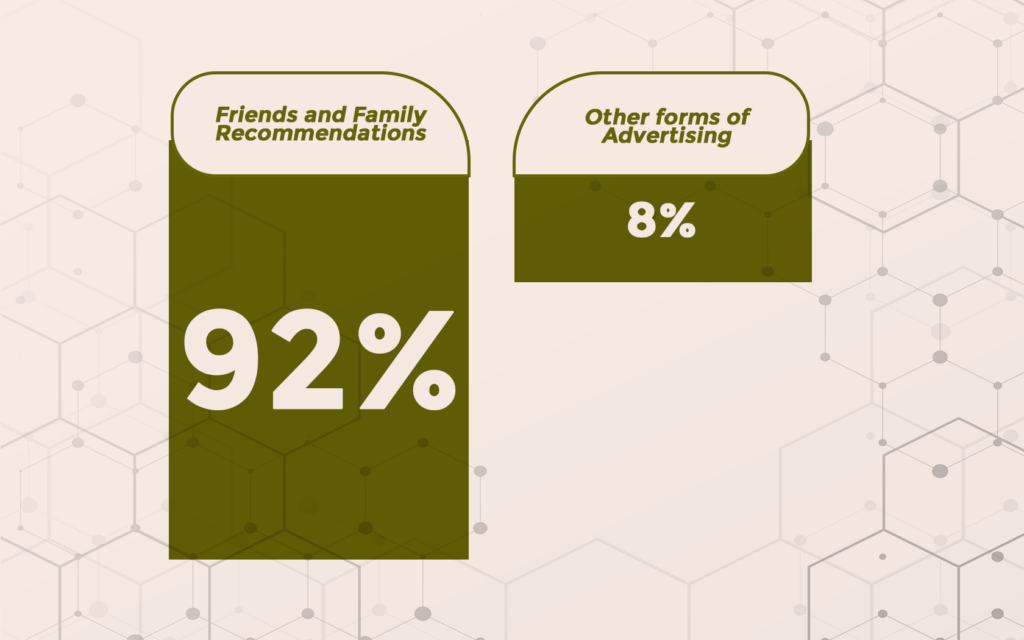Drawing a connection between Birkenstock’s iconic sandals and its brand content marketing strategy reveals an exciting truth: even the most unconventional brands can successfully use content to increase their presence.
Birkenstock, for example, has embraced an “Ugly for a Reason” campaign that pays homage to the history of Birkenstocks and celebrates its namesake footwear’s unique “ugliness.” Birkenstock has also turned to content marketing to reach new audiences and spread the message of its brand story.
Successful branded content provides value to the consumer, whether it be through education, entertainment, or problem-solving. It’s not just about attractive visuals and clever slogans. What steps can you take to ensure your brand material stands out from the competition and effectively conveys your message?
Branded Content Marketing 101
Leverage the power of branded content to enhance your marketing strategy and foster deeper connections with consumers. Branded content integrates your brand messaging and products into the content, offering a more organic and subtle form of communication than traditional advertisements.
Brand content marketing focuses on storytelling and creating an emotional connection with consumers rather than pushing products directly

. Unlike native advertising, which presents sponsored content in editorial content, branded content takes on its format and aims to educate or entertain.
It’s important to note that branded content is not synonymous with content marketing. Content marketing encompasses a broader range of tactics, including branded content, aimed at achieving business goals through content creation and distribution.
While content marketing involves creating and distributing relevant content to attract and retain customers, “branded content” is a subset of this umbrella term that includes any type of media designed specifically for a brand’s marketing efforts. i.e., to further build a stronger brand identity. When executed well, branded content can offer a win-win situation for both the brand and the customers.
Red Bull’s “Stratos” project is an excellent example of successful branded content.
Red Bull Stratos – World Record Freefall
In 2012, Felix Baumgartner made history as the first person to break the sound barrier during a skydive from 24 miles above Earth. The entire event was sponsored and broadcast live by Red Bull. This daring stunt captivates viewers and leaves them positively associated with the Red Bull brand.
The project generated massive attention and engagement, with over 8 million live views on YouTube and a total reach of more than 9 million people. It also sparked conversation and excitement on social media, with the hashtag #stratos trending worldwide on Twitter during the event.
But what made this branded content campaign so successful? One key factor was its relatability to the audience. We fear heights and can only imagine what it would be like to plummet toward Earth at supersonic speeds. Red Bull tapped into this shared human experience and turned it into compelling (branded) content for viewers worldwide.
Additionally, the project aligned with Red Bull’s brand identity as an adventurous and daring company. This content allows the brand to showcase its products more organically rather than through traditional advertisements.
Characteristics of Brand Content Marketing
There’s More to a Branded Content Than Just Selling

Branded content focuses on creating and sharing valuable information with your audience, not just pushing sales pitches. That’s not to say that sales can’t eventually result from content brand marketing efforts, but the focus is on creating brand awareness and equity first and foremost.
Evergreen

Unlike traditional advertisements that may only be relevant for a short period, branded content can continue to provide value to audiences for longer. This is because content like this often focuses on topics firmly rooted in the brand’s industry or discounts, making it timeless and applicable to various audiences.
Branded Content Tells a Narrative

Brand content marketing is all about telling stories, which is what Nike did with their content marketing campaign for equality. By featuring various athletes, both professional and everyday people, Nike told a powerful story about inclusivity and equal opportunity in sports. This campaign resonates with consumers and sparks essential conversations within the industry. It is one of the best examples of how compelling storytelling can elevate brand content marketing.
Customer-Centric

You can use branded content to show your customers that you genuinely understand their needs and desires. By creating content focused on them, rather than just pushing your product or service, you can foster a stronger relationship and ultimately drive conversions.
For example, a beauty brand may produce content that showcases how its products can help customers achieve their desired beauty look rather than just listing product features and benefits.
Shareable to a larger audience

Branded content is highly shareable due to its relevance and value to audiences. People are more likely to share entertaining, informative, or relatable content. This type of content also often features a strong brand identity, making it recognizable and increasing the likelihood of sharing among consumers.
Visually Appealing

Branded content can easily capture your audience’s attention using aesthetically pleasing graphics, videos, and images. User-generated content takes this one step further by incorporating relatable and authentic elements into your brand’s audience.
Content Brand Marketing vs. Content Marketing

While both content brand marketing and content marketing involve creating and sharing valuable content with a target audience, there are distinct differences between the two marketing techniques. Content brand marketing focuses on storytelling and building a brand identity through consistent messaging across all touchpoints.
This approach values emotional connections over brutal sales tactics to create brand loyalty and long-term customer relationships. On the other hand, content marketing puts a stronger emphasis on driving conversions and generating leads through targeted, often more sales-oriented content.
In today’s digital marketing landscape, many businesses incorporate elements of both brand marketing and traditional content marketing into their overall brand strategy. However, it is essential to understand the differences between these approaches to reach and engage your audience effectively.
Content Brand Marketing vs. Native Advertising

In an increasingly saturated market, brand storytelling has become increasingly important. Brand marketing focuses on creating brand stories and developing a brand identity that resonates with consumers. On the other hand, native advertising involves blending advertisements into editorial content to make them non-disruptive and more appealing to consumers. While brand marketing and native advertising can effectively promote a brand, it is vital to consider the overall brand message and values.
Branded Content Marketing Strategies

A branded content strategy is vital for building trusting customer relationships and spreading brand awareness. By making a thorough plan to help define your brand identity, you can create messages that connect with clients and get good results.
The main goal of a branded content strategy is to make a connection between your brand and your audience on an emotional level. This entails getting to know them, their motivations, and the media platforms they favor.
Types of Branded Content Marketing Strategies

When it comes to creating a successful marketing campaign, branded content is vital. But what exactly does that entail? Here are the types of content you can implement in your brand strategies;
Blogs
Branded content can come in many forms, but a blog is one of the most popular and accessible. A blog allows companies to share their brand message with readers and connect with their audience more personally.
But what sets branded blogs apart from regular blogs or social media posts?
For one, branded blogs typically focus on a specific topic or industry that ties into the company’s brand. This allows for targeted, relevant content that speaks directly to the right audience the brand is trying to reach.
Another critical aspect of branded blogs is incorporating branding elements such as logos, colors, and tone of voice. These elements help reinforce the brand’s identity and make the blog feel like an extension of the company itself.
Videos
Videos are a highly effective tool in conveying your brand message, and including a video on a landing page can increase conversion rates by 86%. However, more than adding your logo to the opening and closing frames is needed to create a successful branded video. It’s essential to carefully consider the story you want to tell and how it aligns with your brand values and identity.
This will entertain viewers and give them a clear understanding of what sets your brand apart. One way to share your branded videos is by creating a Youtube channel dedicated to your brand, allowing for a central hub of easily accessible content.
Newsletters
You can stay in touch with your audience and share helpful information through newsletters. Your weekly newsletter can increase engagement and loyalty if each is carefully put together with the needs and interests of your audience in mind.
It’s essential to balance giving users helpful information and sending them too many emails. Additionally, newsletters allow businesses to express their distinct personalities and voices.
Infographics
Infographics are a popular form of content marketing combining visual appeal with relevant statistics and other data. Infographics can engage your audience and provide valuable information to help meet the needs of your target customers. You can quickly get people’s attention by making an infographic with essential information about your product or service.
However, you should ensure that your infographics are accurate and fact-checked before sharing them with the public. False information can damage a brand’s credibility and trustworthiness among consumers.
E-Books
Branded e-books have been recently rising as companies look for new and innovative ways to engage with their audience. These digital books often provide valuable information and insights related to a brand’s industry or product, allowing for an exciting and informative form of content marketing.
However, branded e-books are not a replacement for traditional advertising tactics. They are best used as supplemental material to complement other campaigns and strategies.
Whitepapers
Companies often use “white papers,” which are informative publications, as an effective way to build their brand. They give a lot of information and analysis on a particular topic, giving readers a deep understanding of it and helping people in the sector become thought leaders.
Whitepapers are intended to demonstrate a company’s distinct identity and voice, even though they frequently have a more somber tone. A well-written whitepaper can improve a brand’s credibility and reputation and educate readers.
User Generated Content(UGC)
As branded content, UGC allows for a more authentic and relatable approach to storytelling. By utilizing content created by actual consumers, brands can showcase their products or services more organically. This can result in higher levels of trust and engagement from the target audience.
However, it is essential for brands to carefully curate UGC to maintain a consistent brand image and message. UGC can also be an effective tool for customer feedback and market research, allowing brands to connect with their audience on a deeper level.
Podcasts
Podcasts can effectively establish a regular schedule for delivering content to your audience. By consistently releasing new episodes on a specific topic, you can establish yourself as a thought leader in that industry and cultivate a dedicated following.
Netflix’s “The Ultimate Watchlist.”
In each episode, Netflix executives and special guests recommend their favorite films and TV shows currently streaming on the platform. Not only does this engagingly promote their content, but it also offers valuable recommendations to listeners.
How Content Brand Marketing Can Improve Your Business

As a marketer or business owner, you know the value of having a distinctive brand that stands out from the competitors. Content brand marketing is a compelling strategy for making your company stand out and win over clients. It is significant since it accomplishes the following;
Builds Relationships With Your Target Audience
The recent market trend is to build relationships with audiences. One of the finest ways to do it is through branded content marketing. It allows your business to have honest conversations with people in your target market by telling stories and getting to know them.
It provides for two-way contact, lively discussions, and worthwhile exchanges that can aid in understanding the demands of your clients and potential clients. With branded content, you can create material based on what your target audience likes and what they are interested in.
Enhances Word of Mouth Marketing
Efficient word-of-mouth marketing is the holy grail of advertising, as it is a form of organic promotion that carries a high level of trust and credibility among consumers. Branded content can effectively tap into this type of marketing by offering engaging and shareable material that audiences are likely to discuss with their peers.
According to a study by Nielsen, 92% of consumers trust recommendations from friends and family over all forms of advertising.

By sharing branded content, individuals become brand ambassadors, spreading awareness and potentially driving sales. This can also lead to a positive brand reputation, as the shared content often reflects the values and image the company seeks to portray.
Improves Customer Retention Rates
Branded content can build a strong connection with your audience and establish trust in your brand. This, in turn, leads to loyal customers who keep coming back for more. It also helps drive repeat purchases, as customers will likely buy from a brand they feel connected to.
Boosts Your Search Engine Rankings
Branded content can improve your search engine rankings by increasing the amount of relevant, high-quality content on your website. This allows search engines to crawl better and index your website and helps establish you as a thought leader in your industry. Plus, having a steady stream of fresh content will encourage other websites to link back to your site, another factor that search engines consider when determining rankings.
Creates a Positive Brand Image
Branded content is an excellent tool for companies to showcase their values and mission uniquely and engagingly. By creating content that aligns with a brand’s identity, consumers can connect with the company on a deeper level and view them as more than just a product or service provider.
One example of successful branded content that positively impacted a brand’s image is Dove’s “Real Beauty” campaign.
Dove Real Beauty Sketches | You’re more beautiful than you think (3mins)
Through their viral video campaign, Dove aimed to challenge society’s narrow definition of beauty and promote self-esteem for all women. Not only did this campaign garner positive attention for Dove, but it also sparked meaningful conversations about body image and self-worth. By creating content aligned with its company’s values and mission, Dove was able to shape its brand image and connect with consumers positively.
Increases Company Revenue
Branded content can increase a company’s revenue by enhancing brand recognition and building customer loyalty. This can build brand awareness and a positive company perception, ultimately driving purchasing decisions and boosting sales.
Additionally, branded content allows for a more personalized and interactive experience with the brand, creating stronger connections with customers and prompting repeat purchases. Incorporating branded content into a marketing strategy can significantly benefit a company’s bottom line.
How to Create a Successful Brand Content Marketing Strategy for Your Brand

You can develop a successful content marketing strategy in several ways. Here are a few pointers:
Define Your Brand Identity
Define and execute a strong brand identity to boost your company’s success. Articulate your brand’s personality, positioning, and mission to establish a distinct and powerful identity.
Bring your brand’s personality to life by embodying its emotions and characteristics, whether playful or serious, eccentric or conventional. Stand out from competitors and connect with your target audience by defining your brand’s unique position. Communicate your brand’s goals and core values through a concise mission statement.
By establishing a clear and distinctive brand identity, effectively communicate with your audience and deepen your connection with them. Consistently uphold your brand identity to develop a strong reputation and pave the way for continued success.
Know Your Audience
It is essential to understand your target audience clearly as a brand. This allows you to create content that resonates with them and effectively communicates your brand personality and positioning. Consider demographics, interests, and pain points to tailor your messaging and genuinely connect with your audience.
Conduct market research and gather customer feedback to refine your understanding of your audience continually. By knowing your audience, you can create content that grabs their attention.
Research Your Competition
To create a successful brand, you need to understand what your competition is doing. Branding isn’t just about creating unique content for your company–it’s also about developing better content than your competition’s. To get an idea of what kind of content your competition produces, start by doing a simple Google search.
Look for articles, blog posts, infographics, and other content relevant to your industry. Please take note of their brand personality and positioning and identify any weaknesses or gaps in their content strategy. This will allow you to position your brand as a leader in the industry by filling those gaps with your unique content.
Create Valuable Content
Making valuable content for your audience is vital to creating a successful brand content strategy. Providing your target audience with helpful information, entertainment, or solutions falls under this category.
In addition to presenting original ideas and points of view, good content doesn’t just repeat information that your audience can already find elsewhere.
For example, a clothing company might make a fashion guide that shows off its products and gives tips on how to style and put together different outfits. This promotes the clothing line, gives customers value by assisting them in coming up with fresh looks, and may even encourage them to make purchases.
Be Consistent
This means consistently using the same tone, style, and visual elements in your content. Consistency helps reinforce your brand identity and makes it easier for consumers to recognize and remember your company. It can also help build trust with your audience as they know what to expect from your brand.
However, it is essential to note that consistency means more than limiting creativity or sticking rigidly to a formula. Instead, it involves finding and maintaining a balance between staying true to your brand identity and allowing room for flexibility and innovation.
Promote Your Content
Keep in mind that creating content is only half the battle. To truly see success, you must promote your content effectively. You can do this by sharing it on social media: create posts on Facebook, Twitter, and Instagram, or join relevant LinkedIn groups to share it with professionals in your industry.
Email marketing is also a great way to promote content through company newsletters or targeted campaigns to specific segments of your audience.
Additionally, reaching out to influential individuals or websites in your industry for potential partnerships or guest posting opportunities can significantly increase the reach of your content. Take advantage of organic and paid strategies, such as boosting social media posts or running targeted ads, to further amplify your content promotion efforts.
Measure Your Success
Monitoring the effectiveness of your material is crucial as it enables you to identify what is effective and what needs improvement. Monitoring website traffic, social media activity, and sales conversions are all part of measuring performance.
You may alter your plan by continuously monitoring these critical KPIs and ensuring that your content benefits your company’s objectives.
Top Examples of Brand Content Marketing Brands Done Well
Coca Cola
One example of successful branded content is the “Share a Coke” campaign.
This campaign involved putting popular names and phrases on the labels of Coca-Cola bottles and encouraging customers to share with friends and loved ones.
This campaign successfully connected with customers and increased sales, as it tapped into the human desire for personal connection and sparked a trend of sharing and posting photos on social media.
This campaign has been replicated in multiple countries, showing its global appeal and success. This successful use of branded content by Coca-Cola indicates the power that personalization and emotional connections can have on consumer behavior.
LEGO Movie
This kids’ film, released in 2014, is more than just a movie featuring plastic building blocks. It is a brilliant example of branded content, utilizing the LEGO brand to tell a compelling story that appeals to kids and adults alike. The film’s success led to spin-offs and merchandise tie-ins that further solidified LEGO’s place in pop culture.
This is just one example of how the LEGO brand has consistently found new and innovative ways to engage its audience through branded content. LEGO proves that a strong brand can successfully branch out and tell unique stories while staying true to its core identity through movies, video games, or even themed amusement parks.
Google Parisian Love
Google’s Parisian Love is a branded content campaign that tells the story of a Google search used to plan a surprise trip to Paris for a couple in love. The campaign received widespread praise for its creativity and heartwarming portrayal of modern romance.
Google Parisian Love 2010 Super Bowl XLIV Commercial Ad HD
However, it’s important to note that Google Parisian Love was not just a simple love story. The campaign successfully incorporated Google’s products and services, showcasing their utility in everyday life. By tying the narrative to Google search, Google Maps, Google Translate, and Google Street View, the campaign effectively promoted the brand and emphasized its capabilities.
In a time where digital advertising is often criticized for being inauthentic and invasive, Google Parisian Love stands out as a successful example of branded content done right. It tells a compelling story while seamlessly incorporating the brand, ultimately leaving viewers with a positive association with Google.
Final Thoughts
Often, branded content can feel like an afterthought in an overall digital marketing strategy. However, it is crucial to consider the impact of carefully crafted content on building a solid brand identity and reaching a targeted customer base, especially in the ever-growing realm of e-commerce.
It is important to remember that branded content does not exist in a vacuum – it exists alongside the content created by other brands. Keeping up with industry trends and analyzing the successes and failures of competitors can greatly inform one’s branded content strategy.













